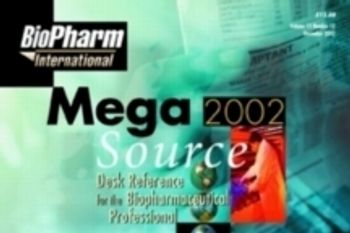
Five years of indexed BioPharm articles to answer your technical questions.

Five years of indexed BioPharm articles to answer your technical questions.

by the Biopharmaceutical Process Extractables Core Team, including Don Miller, Bayer; Bob Seely, Amgen; John Bennan, ComplianceNet, Inc.; Frank Bing, Abbott Laboratories; Heather Boone, Genentech; Jim Fernandez, Fernandez and Associates; and Harold van Deinse, Baxter Healthcare Corporation Potential interactions between a drug product and its packaging or container closure have always been important considerations for parenteral manufacturers. Now ? at a time of increased regulatory interest in extractables, lower limits of detection, and more biopharmaceuticals reaching commercial stage ? the consequences of not evaluating the extractables in your process stream can be significant. Participants from more than 15 biopharmaceutical companies and data collected for more than 25 years were used to develop the parameters of this article.

by John Woodley and Paul A. Bird, the Advanced Centre for Biochemical Engineering at University College, London, and David C.A. Sharp, Pfizer Global R&D. Increased selectivity and byproduct prevention are some of the advantages of using biocatalytic processes for manufacturing chiral products and chemical intermediates. yet no industrial processes are currently using biocatalysts with Baeyer?Villiger monooxygenases because, among other factors, available monitoring and control techniques have not been rapid enough to prevent reactant and product inhibition. However, as the authors describe, rapid monitoring and control can now be achieved using near-infrared spectroscopy that, during tests, resulted in a 30% gain in productivity.

by Mary Sawyer, Masoud Hosseini, Carrie Schore, and Bennie I. Osburn from School of Veterinary Medicine, University of California, Davis, department of veterinary pathology, microbiology and immunology; Joseph Vu, Baxter biosciences division; Krystyna Trzepla-Nabaglo, Celilia Pina, and Manuel Lagunas-Solar from the laser unit, Crocker Nuclear Laboratory, University of California, Davis; and Wayne Smith, department of population health and reproduction at the University of California, Davis New evidence suggests the West Nile virus can be transmitted during blood transfusion from an asymptomatic donor. However, it is now possible to use pulsed ultraviolet laser light to inactivate viruses such as West Nile at large production scales. These experimental data show that using laser light on virus-treated media can render biological products free of contaminating viruses without compromising the biological activity essential to cell cultures.

by Gordon Kelley, BioPharm International magazine